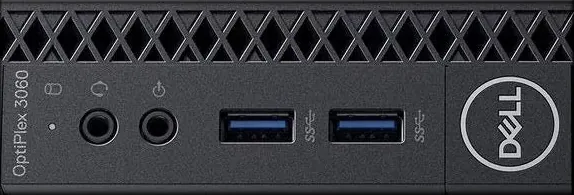I proudly present my smallest PC that performs the biggest tasks—and does them well. Running a web design company involves numerous responsibilities, one of which is hosting copies of client websites, including older versions in case clients need to access previous content. Thanks to Proxmox, managing this is a breeze.
Proxmox Server Specifications
- Processor: Intel Core i5-8500 (six cores)
- Graphics: Integrated Intel UHD 630
- RAM: 16 GB DDR4
- Storage: 256 GB NVMe SSD

Hosting WordPress Containers with Proxmox
Benefits of Using Proxmox
Before discovering Proxmox, I relied on the LAMP stack. While the LAMP stack is robust for local web development, it becomes more challenging when testing different Linux distributions. Once a LAMP server is set up, it typically serves its intended purpose without much flexibility.
All of that changed when I acquired a second-hand Dell Optiplex 3060 to host local instances of all my WordPress sites, along with some new ones for testing plugins and themes. After a few months of using Proxmox, I was able to delete all my notes related to setting up, configuring, and optimizing a LAMP stack for hosting multiple WordPress and PHP sites.
Proxmox Tweaks and Tips
Here are some useful tweaks and tips for managing a Proxmox server:
- Get all Proxmox templates:
- Run
pveam updatein the pve / Proxmox console.
- Run
- Change PHP post and upload size limits:
- Start the container for which you want to implement the changes.
- Edit: nano /etc/php/8.2/apache2/php.ini
- Update
post_max_sizeandupload_max_sizeto 256MB or more. - Restart the container.
Update a WordPress container:Runapt update && apt upgrade.
- Disable Turnkey Linux footer message:
- Run:
a2dismod substitute - Restart Apache with:
service apache2 restart
- Run:
- Locate WordPress sites:
- On a Proxmox server, sites are stored in
/var/www/wordpress - Knowing this, you can use your file browser and sftp to access individual WP sites.
- On a Proxmox server, sites are stored in
- Cluster Manager
Since I am not using clustering, I stop and disable thepve-clusterservice:systemctl stop pve-clustersystemctl disable pve-cluster
Considerations for Web Developers: Hosting WordPress Containers
Using a budget-friendly Dell Optiplex SFF PC as a Proxmox server offers several advantages:
- An efficient and reliable development environment available 24/7
- The peace of mind that comes with container-based virtualization
- Easy setup, maintenance, and flexibility in managing hundreds of WordPress sites
Additionally, I can effortlessly create new containers and discard them when they are no longer needed—perfect for experimenting with new WordPress themes and plugins. Moreover, I have the assurance that, in addition to server backups, I maintain a local copy of everything, along with additional backups created by the powerful All-In-One WP Migration plugin.
Proxmox VE Helper-Scripts
If installing Proxmox on a new PC, then you can take advantage of ready-made scripts you can find at: https://tteck.github.io/Proxmox/#proxmox-ve-tools
The one I used is found in Proxmox VE Tools > Proxmox VE Post Install. To run it, paste the provided script it into the PVE shell. Here is a partial image of what this line looks like.
bash -c “$(wget -qLO – https://github.com/tteck/Proxmox/raw/main…..
Note that I am not providing the full command as doing so, would not give you the latest version. Therefore, click the above link to be sure to always have the latest, most up-to-date version.
